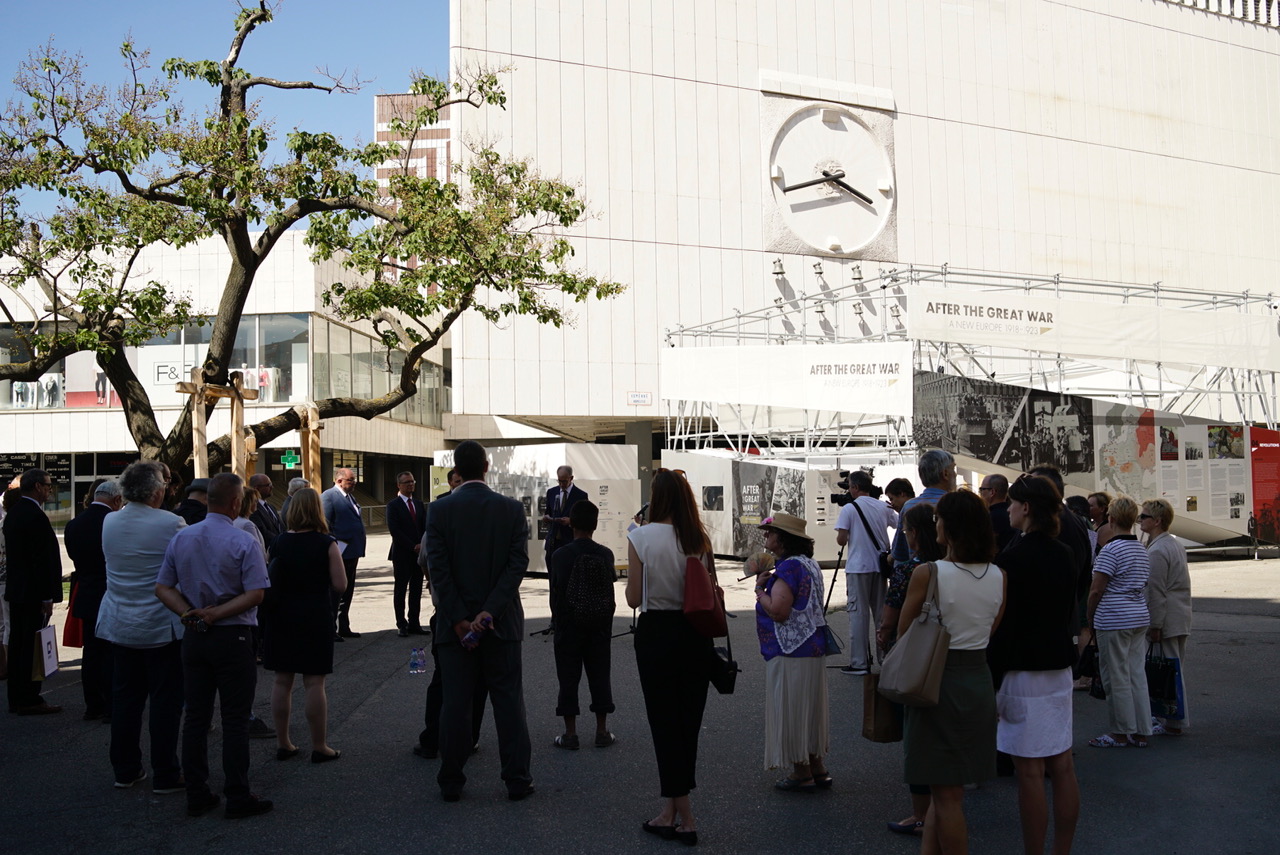The travelling outdoor exhibition Is currently visiting the Slovak capital where it will be staying until 22 July.
After having been shown in Prague and Sarajevo, the exhibition "After the Great War. New Europe 1918-1923" is now being presented in Bratislava, one of the important cities of the region the display largely focuses on.
The main goal of the display is to shed some light on the turbulent period right after the end of the First World War and to stress the immense scale of political, social and cultural changes which took place back then and in many cases have never ceased to influence our present day. Those changes primarily affected Central and Eastern Europe where most borders were redrawn and new countries suddenly appeared on the map. The exhibition aims also at raising awareness of the variety of viewpoints, sensibilities and individual memories, as well as the necessity of taking all of them into account while conducting a constructive dialogue on the common past.
More about the exhibition you can learn from here
Among the participants of the official part of the opening ceremony were: His Excellency Joachim Bleicker, the Ambassador of the German Federal Republic in Slovakia, His Excellency Dr Krzysztof Strzałka, the Ambassador of the Republic of Poland in Slovakia, Ms Lucia Štasselová, the Deputy Mayor of Bratislava and Prof. Dušan Kováč, member of the Academic Council of the exhibition, Slovak Academy of Sciences. A short welcome to the gathered guests was also given by Prof. Jan Rydel from ENRS and Dr Ján Pálffy from the Nation's Memory Institute (UPN).
In her very personal speech, Ms Lucia Štasselová, a vice-mayor of Bratislava, evoked her great-grandfather's laconic yet touching testimony of his personal experience of the Great War, that has been preserved in her family's chronicle. In a very telling way it illustrated the inability of putting the war into words. She stressed, however, that exploring our past, even if we couldn't have experienced it as direct participants, is essential to understanding present events, their context and roots. She thanked the ENRS for providing a good occasion to learn more about this key moment in European history.
The German ambassador Joachim Bleicker was also very enthusiastic about the display, saying: "Planned as an open and free exhibition in public space, this exhibition makes history more accessible to people and helps them to understand better the causes and effects of war". He also added that what was really important about the exhibition was that it took into account a variety of perspectives: "Knowing and understanding the feelings and positions of the other side is key – we don’t necessarily have to agree in the end, but respect for facts and the other side and – in the end - compromise are the only way to reach long-lasting solutions.
The Polish ambassador Krzysztof Strzałka, in turn, stated: “the exhibition is very important to understand our region, its specificity, historical memory and national experiences”. “I can say that this exhibition contributes to the integration of our part of Europe”, he concluded.
The display will remain in Bratislava till 22 July. Afterwards, it will travel to Verdun, France – an important historic site, where the longest and bloodiest battle of the First World War took place.
Exhibition "After the Great War. A New Europe 1918 – 1923"
Location: Kamenné námestie, Bratislava
Dates: 4-22 July 2019
